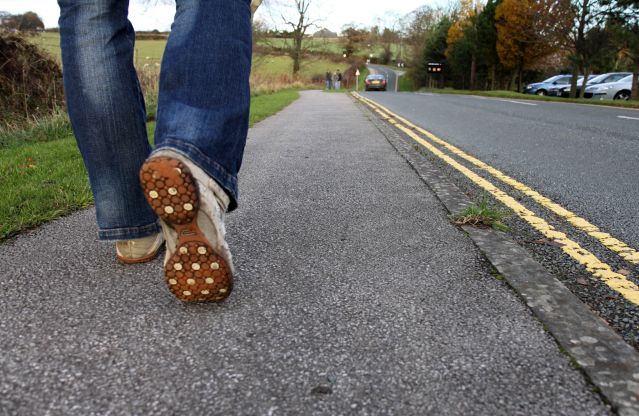Health
Hippocrates Was Right: "Walking Is the Best Medicine"
Light exercise—such as an easy walk—is extremely good for your health.
Posted June 12, 2015

Hippocrates (c. 460 – c. 370 BC), was a Greek physician who is often referred to as the "Father of Western Medicine." Along with creating the Hippocratic Oath, his wisdom and sage-like advice, such as, “walking is the best medicine,” remains a timeless non-pharmacological prescription for well-being and longevity.
Recently, public health experts have realized that setting the bar too high by recommending unachievable guidelines for physical activity often backfires. When faced with an unrealistic or lofty goal, most of us are inclined to cut our losses before we invest any effort or waste our time on something that seems fruitless.
Luckily, reaping the benefits of physical activiy is not a zero-sum game. Research continues to prove that small amounts of physical activity lead to exponential health benefits. Doing anything physically active is infinitely better than remaining sedentary or inactive.
Last month, I wrote a Psychology Today blog post, Very Small Amounts of Exercise Can Reap Huge Benefits, based on two new studies which reported that a small amount of exercise—for a short duration of time and at a low intensity—goes a long way.
Another new study confirms previous findings about the benefits of light-intensity exercise in small doses. Researchers from Oregon State University (OSU) found that light-intensity exercise may be nearly as effective as moderate or vigorous exercise for older adults—especially if someone consistently participates in some type of physical activity.
The June 2015 study, "Evidence to Support Including Lifestyle Light-Intensity Recommendations in Physical Activity Guidelines for Older Adults," was published in the American Journal of Health Promotion. The study was lead by Paul Loprinzi, and co-authored by Bradley Cardinal, a professor in the College of Public Health and Human Sciences at Oregon State University, and Hyo Lee.

The OSU researchers found that older adults who regularly performed light-intensity exercise were 18 percent healthier than their peers who were less active. People who were regularly active had: lower body mass index (BMI), smaller waist circumference, better insulin rates, and were less likely to have chronic diseases.
The researchers emphasize that small amounts of exercise—such as taking the stairs instead of the escalator, shopping at a mall versus online, or walking into a restaurant instead of using the drive-thru window—can make a huge difference. If your daily one to two-minute increments of exercise add up to a total of 30 minutes per day, the benefits appear to equal 30 minutes of continuous movement.
The study of more than 6,000 American adults found that an "active lifestyle approach" in which you "Make activity part of your lifestyle" has broad appeal and excellent success rates. In a press release, Cardinal described the results of the study,
You get a nice array of health benefits by doing five hours of light physical activity per week. There appears to be some real value in devoting at least three percent of the 168 hours available in a week to these light forms of physical activity. This research suggests that doing something is dramatically better than doing nothing. For the average, everyday person, that is a much more palatable message than the current guidelines that emphasize moderate to vigorous exercise.
The findings of this study are significant because older adults may be unable, or uninspired, to pursue moderate to vigorous exercise. Light exercise is more appealing to people from all walks of life for a wide range of reasons including the fact that it can easily be incorporated into someone's daily routine.
Conclusion: Walking Is the Best Medicine for a Lifespan of Well-Being

In a press release, lead author Paul Loprinzi concluded, "These findings highlight that, in addition to promoting moderate-intensity physical activity to older adults, we should not neglect the importance of engaging in lower-intensity, movement-based behaviors when the opportunity arises."
“The findings are part of a growing body of evidence that indicate light activity can lead to improved health, but more study is needed to better understand how the two are connected,” Cardinal concluded. Adding, “It may also be time to rethink current exercise guidelines, with new recommendations geared specifically to adults over age 65 that emphasize the benefits and ease of participation in light activity.”
If you'd like to read more on this topic, check out my Psychology Today blog posts:
- "Why Does Walking Stimulate Creative Thinking?"
- "Carpe Diem! 30 Reasons to Seize the Day and How to Do It"
- “Can Exercise Protect Your Brain From Depression?”
- "Sitting Can Drain Brain Power and Creativity"
- "Why Does Inactivity Drain Human Brain Power?"
- "Very Small Amounts of Physical Activity Can Reap Huge Benefits"
- "Why Is Physical Activity So Good for Your Brain?"
© Christopher Bergland 2015. All rights reserved.
Follow me on Twitter @ckbergland for updates on The Athlete’s Way blog posts.
The Athlete’s Way ® is a registered trademark of Christopher Bergland.




